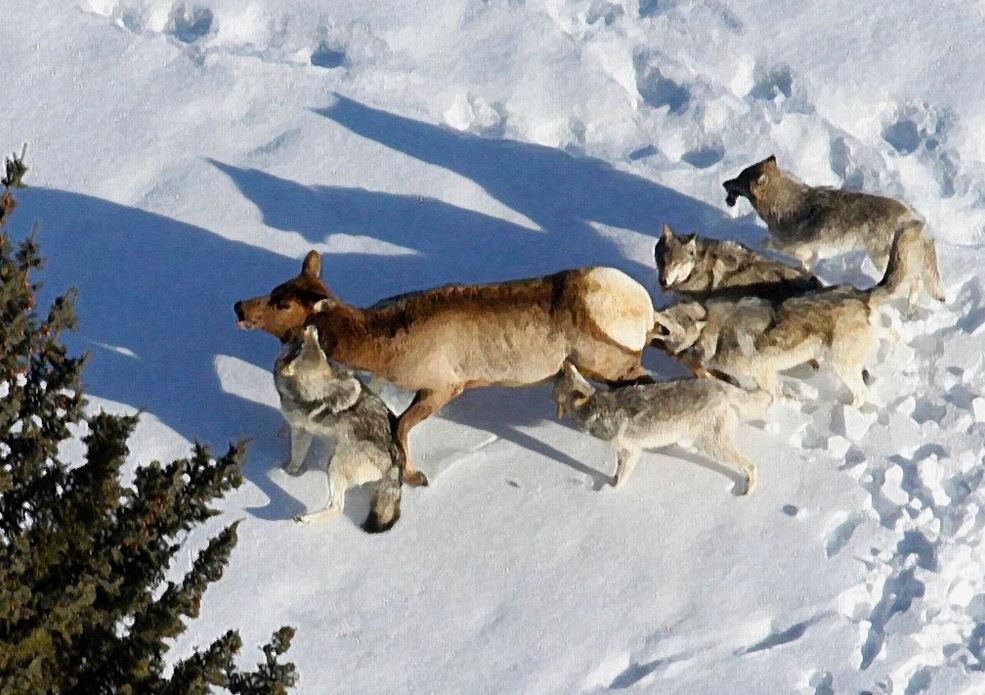The Coloradoan
Miles Blumhardt
Do wolves fix ecosystems? CSU study debunks claims about Yellowstone reintroduction
The commonly held claim that wolves reintroduced into Yellowstone National Park in the mid-1990s spearheaded a “trophic cascade” of ecological restoration, as some studies indicated, is unfounded, according to results from a recently completed 20-year Colorado State University study.
Tom Hobbs and David Cooper, CSU researchers and co-authors of one of the longest running studies of its kind, also pointed out that doesn’t mean wolves shouldn’t be reintroduced into areas such as was recently done in Colorado.
But their research revealed the restoration of apex predators, including wolves, to Yellowstone after a long absence failed to reverse the effects of their removal from the ecosystem.
Trophic cascade refers to how the addition or removal of apex predators at the top of the food chain affects animals and plants further down the food chain, which in turn impacts the entire ecosystem.
In Yellowstone’s case, it was claimed in a 2004 study that reintroduced wolves preying on elk created a “landscape of fear” and, either through death or behavioral change, reduced the over-browsing by elk on willows and aspen along rivers and creeks. This in turn, it was believed, led to the return of beavers, which rejuvenated willows and aspen and led to the restoration of birds, insects and other plant life.
That idea became widely popular in 2014 when the video “How Wolves Change Rivers” was released. It has since been viewed more than 44 million times on YouTube, furthering the simplistic idea of a complex situation.
Key findings from CSU’s long-term study in Yellowstone National Park regarding impact of wolves
- The study tested if the return of large carnivores to northern Yellowstone restored the beaver–willow state, providing evidence that restoring apex predators to food webs was able to reverse the conditions that emerged while they were absent.
- That was evaluated against the alternative hypothesis that the absence of disturbance by beavers and persistent browsing by large herbivores stabilized the current elk–grassland state, providing evidence that ecosystems with complex food webs can be resilient to predator restoration.
- Research was done by fencing off plots to prevent browsing and constructing simulated beaver dams in some fenced and non-fenced plots to raise the water table. Other sites were unaltered to examine the differences in vegetation growth.
- If predators regulated the elk population, in theory there would be less browsing of willows and the landscape would return to its previous state. Instead, willows remained short in control plots while the fenced sites with simulated beaver dams showed dramatic recovery, indicating the importance of groundwater in addition to reducing browsing
Continue reading here
Subscribe to RANGE magazine
Call 1-800-RANGE-4-U
You may also like
-
Tribute: Utah’s Green Dissident has passed on
-
Fed plan would kill 500,000 barred owls to “recover” spotted owls
-
Ecologist goes undercover to expose eagle deaths cause by wind turbines
-
Foot deformities in Texas foals caused by effects of nearby wind turbines
-
Groups sue Biden Administration to protect Right Whales from offshore wind project


